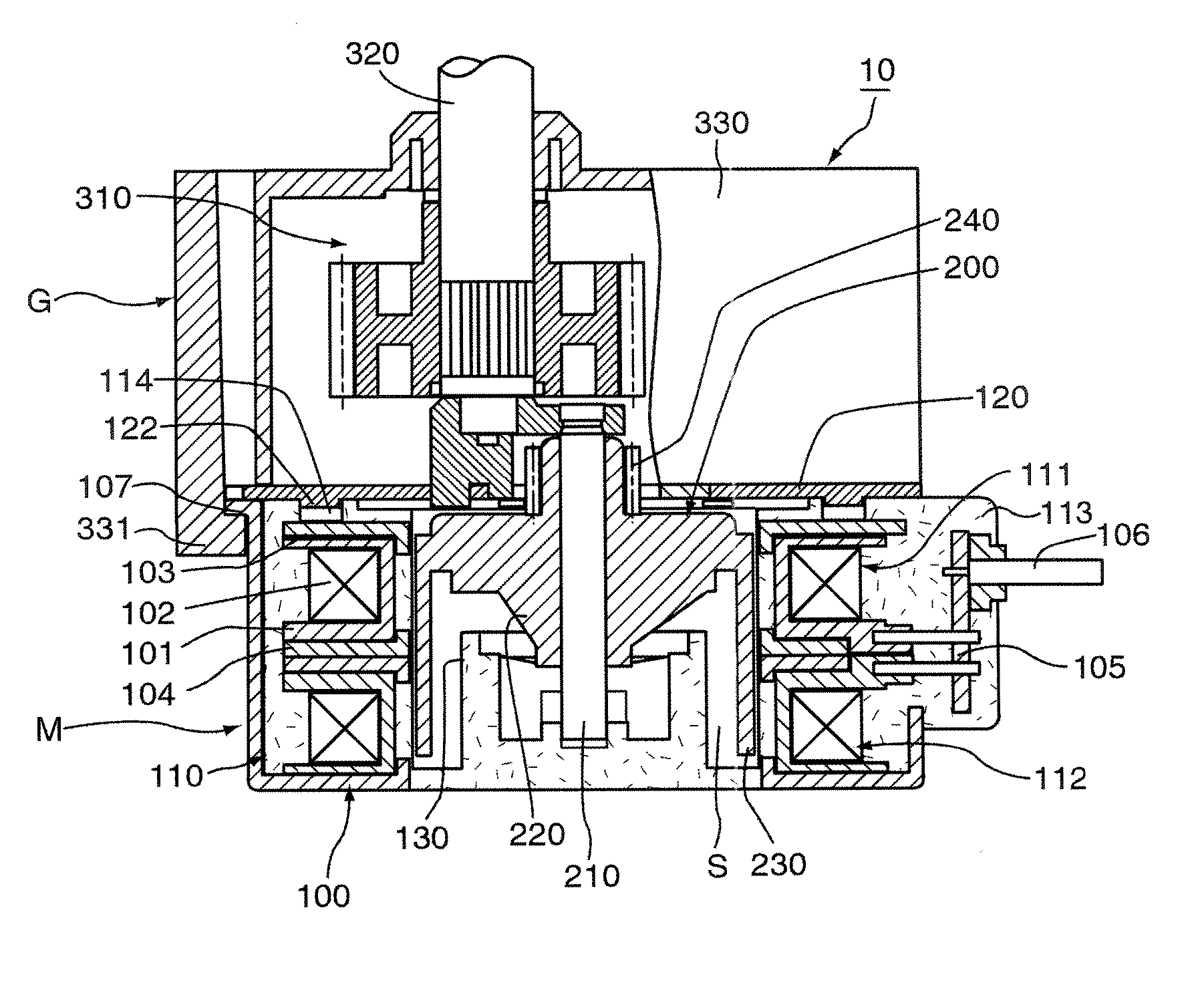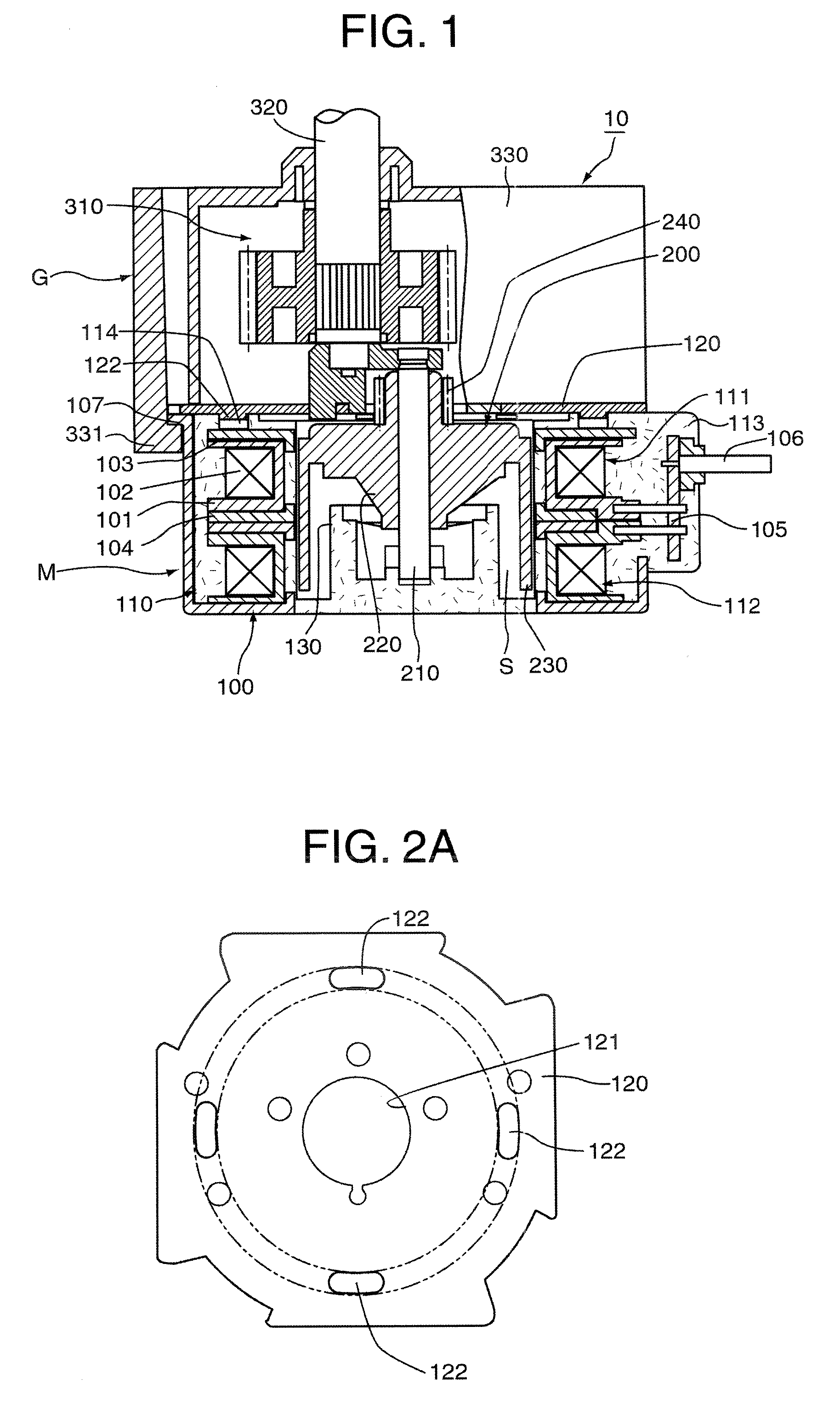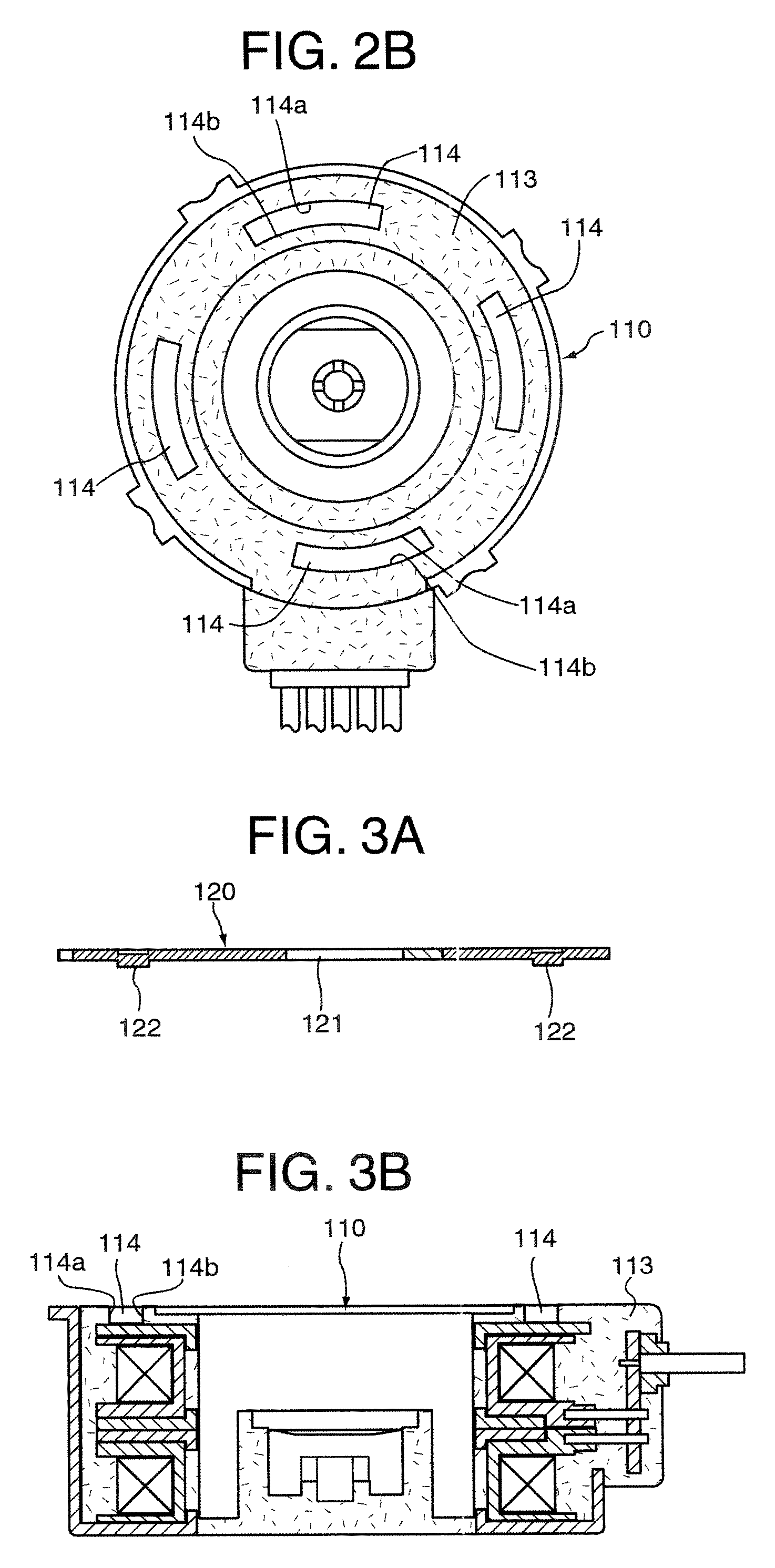Positioning structure between parts of different materials, and assembly structure of motor
- Summary
- Abstract
- Description
- Claims
- Application Information
AI Technical Summary
Benefits of technology
Problems solved by technology
Method used
Image
Examples
first embodiment
[0057]FIGS. 1, 2A, 2B, 3A and 3B show a construction of a motor to which the motor assembly structure as the first embodiment according to the positioning structure between parts of different materials of the present invention is applied, FIG. 1 is a sectional view of the whole motor containing a speed reducer, FIG. 2A is a plan view of the front cover of the motor shown in FIG. 1, FIG. 2B is a plan view of the stator assembly of the motor shown in FIG. 1, FIG. 3A is a sectional view of the front cover of the motor shown in FIG. 1, and FIG. 3B is a sectional view of the stator assembly of the motor shown in FIG. 1.
[0058] As shown in FIG. 1, a motor 10 of the first embodiment generally consists of a motor body M and a speed reducer G. The motor body M is provided with a stator 100 and a rotor 200. The stator 100 is provided with a stator assembly 110 and a front cover 120. The stator assembly 110 is constructed by cascading first and second unit stators 111 and 112 that are molded b...
second embodiment
[0070]FIGS. 7A through 7C are sectional views showing the motor assembly structure according to the second embodiment of the positioning structure between parts of different materials of the present invention. FIG. 7A shows a stator assembly, FIG. 7B shows a casing, and FIG. 7C shows an assembling structure of the both parts.
[0071] A stator assembly 310 is constructed by cascading two unit stators 311 and 312 as with the first embodiment. Resin-made projections 313 are formed at the bottom of the lower unit stator 312. On the other hand, a cup-shaped casing 320 is made of metal and a groove (or a through hole) 321 to which the projections 313 are fitted are formed on a bottom wall. Three or more projections 313 are formed on a circle whose center is coincident with the rotation center as the reference point. The grooves 321 are formed corresponding to the projections 313.
[0072] According to the second embodiment, even if the positions of the projections 313 of the stator assembly ...
third embodiment
[0074]FIG. 9 is a sectional view showing the assembly structure of a mold pinion and a hollow shaft according to a third embodiment of the positioning structure between parts of different materials of the present invention. The mold pinion 610 is made of resin. A gear 611 is formed at the tip of the mold pinion 610 and a groove 612 is formed on the base portion around the whole circle. The hollow pipe 620 is formed as a cylinder and the tip thereof has a function of a projection 621. Thickness of the tip portion may be thinner than the other portion.
[0075] In the example of FIG. 9, the reference point is coincident with the rotation centers of the mold pinion 610 and the hollow pipe 620. When the projection 621 is inserted into the groove 612 of the pinion 610 at a normal temperature, the projection 621 contacts the inner and outer wall surfaces of the groove 621, and thereby, the both parts are fixed. When the temperature Increases, the resin-made pinion 610 is expanded with the p...
PUM
| Property | Measurement | Unit |
|---|---|---|
| Structure | aaaaa | aaaaa |
| Width | aaaaa | aaaaa |
Abstract
Description
Claims
Application Information
 Login to View More
Login to View More - R&D
- Intellectual Property
- Life Sciences
- Materials
- Tech Scout
- Unparalleled Data Quality
- Higher Quality Content
- 60% Fewer Hallucinations
Browse by: Latest US Patents, China's latest patents, Technical Efficacy Thesaurus, Application Domain, Technology Topic, Popular Technical Reports.
© 2025 PatSnap. All rights reserved.Legal|Privacy policy|Modern Slavery Act Transparency Statement|Sitemap|About US| Contact US: help@patsnap.com



